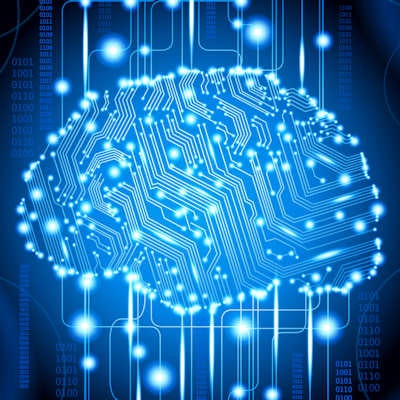
No, artificial intelligence (AI) won't replace radiologists anytime soon -- if it ever will. But the technology is poised to dramatically affect the practice of radiology by optimizing workflow, facilitating quantitative radiology, and even finding genomic markers not currently seen by radiologists.
AI has generated both fear and excitement in the world of radiology. The rapid pace of technology advances -- coupled with relentless hype on the part of some AI start-up companies -- has led some outside the specialty to predict that the services of radiologists will soon no longer be required.
But rumors of the imminent demise of radiologists are likely greatly exaggerated. In interviews with AuntMinnie.com, several radiology luminaries shared their views on a range of AI topics, such as the most important applications on the horizon, barriers to AI's adoption, its effect on the practice of radiology, and whether or not radiologists should fear or embrace the technology.
Current state of AI
The use of AI in radiology actually isn't new; thousands of papers on computer-aided detection (CAD) and image analysis algorithms have been published in journals and presented at meetings over the past 30 years. However, very few of these algorithms are currently used in clinical practice, and those that are have produced more evolutionary than revolutionary gains, said Dr. Eliot Siegel of the University of Maryland.
 Dr. Eliot Siegel from the University of Maryland.
Dr. Eliot Siegel from the University of Maryland."Mammography CAD, which has been around for more than 20 years is the only machine-learning application that is widely adopted in diagnostic imaging today," Siegel said. "Approximately 90% of mammographers are using it, but with tremendous doubt and skepticism -- and in some cases derision -- of its added value."
In the past several years, however, the application of graphical processing units (GPUs) for machine learning has yielded major increases in computing processing power. This has facilitated more computationally intensive approaches such as deep learning and -- particularly of interest for image recognition tasks -- a form of deep learning called convolutional neural networks, Siegel said.
"These techniques and general distribution of software have made it possible for a wider variety of people to apply machine learning to nonmedical images with great success," Siegel said. "They also hold the potential to work well with medical images, but require careful tagging and annotation of the images by humans and large numbers of imaging studies. These large tagged datasets are currently difficult to find, and it is very costly and time-intensive [to create these datasets]."
Despite inflated expectations being driven by Silicon Valley start-ups, machine learning is still pretty far away from the average radiologist's clinical life, said Dr. Marc Kohli of the University of California, San Francisco (UCSF).
However, "clinical radiologists are becoming more educated in the basics of [machine learning] and how it will apply to their practice," Kohli said. "Academics are really quite excited and hope that growing interest in [machine learning] means more funding. Most academic programs are working hard to add data scientists."
While CAD software developers are using machine learning and, more recently, deep learning in the development of their software, the number of these products in the marketplace can still be counted on one hand, said Dr. Bradley Erickson, PhD, of the Mayo Clinic in Rochester, MN. The most common application for machine learning right now is speech recognition, but there is still a lot of room for improvement in that technology, he said.
Speech recognition technology "seems it is still mostly word recognition and not concept understanding, which could then fix semantic errors," Erickson said.
Key radiology applications
The field of artificial intelligence in radiology is moving fast, but it's still in its infancy in terms of its potential in radiology, said Dr. Luciano Prevedello of Ohio State University Wexner Medical Center.
Prevedello predicts that AI will be used more often over the next two years in workflow optimization applications, such as his Ohio State team's initiative to apply deep learning to help spot CT exams with critical findings. AI for imaging diagnosis will come later on due to the need for extensive validation prior to clinical use, he said.
Noting that AI is helpful for finding patterns in data and also for predicting future behavior based on prior patterns, Dr. Raymond Geis of the University of Colorado School of Medicine said that the first commercially used AI algorithms in radiology will not evaluate images themselves. Instead, these initial algorithms will perform tasks such as developing hanging protocols based on how a radiologist has viewed a similar exam in the past, said Geis, who is also vice chair of the Informatics Commission at the American College of Radiology.
As for AI in image evaluation tasks, the first algorithms that enter widespread commercial use could be incorporated, for example, into OEM software on CT scanners, Geis said.
"These algorithms might screen images as they're produced in real-time, and as the images are being acquired, alert radiologists to events such as acute intracranial hemorrhage," he said.
The most important clinical applications for AI over the next couple of years will be in niche applications such as triage for acute brain hemorrhage, lung nodule detection and characterization, and vertebral body fracture determination, as well as MR and nuclear cardiac image analysis, according to Siegel.
"These will be very narrow, specialized applications in diagnostic radiology," Siegel said.
These specialized applications will likely continue to proliferate over the next three to five years, but AI will also increasingly be applied outside of the images themselves, he said.
"AI applications will make speech recognition smarter and better at predicting critical findings, recognizing actionable follow-up requirements, and using structured data from sources such as BI-RADS, C-RADS, GI-RADS, LI-RADS, Lung-RADS, TI-RADS, and PI-RADS to help make a diagnosis or recommendation," Siegel said. "It will make PACS workstations smarter and will allow more sophisticated assessment of quality of service."
Kohli of UCSF said it's hard to predict which will be the most important clinical applications for AI in radiology over the next few years, because a successful application requires many factors such as integration, validation, and U.S. Food and Drug Administration (FDA) approval.
"Applications that do not require FDA approval will be much easier to implement than others, so I see things like study prioritization as early winners," Kohli said. "Successful medium-term solutions will need to focus on adding value more than providing CAD-like functionality."
While the potential for AI to replace radiologists has received much attention, AI's most important application in radiology will be visualizing features on images that reflect genomic or diagnostic properties that radiologists don't see today, Erickson said.
"We and others are publishing papers showing that deep learning can predict genomic markers with high accuracy from routine CT and MR images, even when humans have seen little or nothing that reflects these properties," Erickson said. "I think this is where much more attention needs to be paid."
The second part of this series will look at barriers to the adoption of AI, as well as its potential effects on radiology over the next 30 years.



















